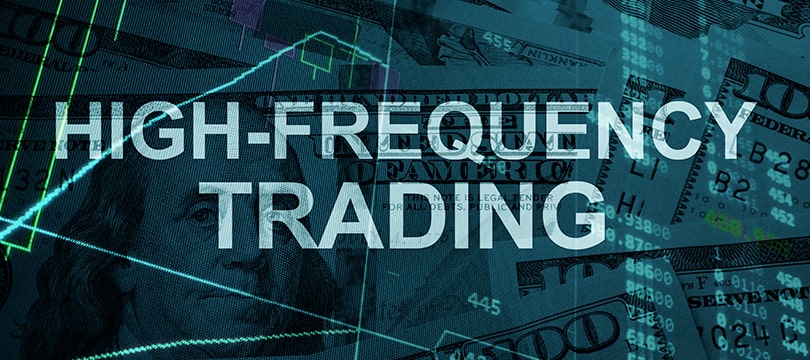High-Frequency Trading (HFT): Definition, Pros, and Cons
April 24, 2024

High Frequency Trading (HFT) represents one of the most discussed and innovative trading methodologies in the modern financial landscape.
In this guide, we delve into the details of HFT, explaining how it works and its main advantages and disadvantages, thus providing a clear and comprehensive overview for those who wish to approach this practice.
What is High Frequency Trading and How Does it Work
High Frequency Trading is a form of algorithmic trading that involves executing a large number of orders at very high speeds. HFT uses complex algorithms to analyze markets and execute orders based on rapidly evolving market conditions. These algorithms are programmed to identify extremely fleeting profit opportunities, often on the order of milliseconds or microseconds.
The functioning of HFT is based on the ultrafast speed of order execution, which is made possible by the use of advanced technological infrastructure, such as direct connections to financial markets and the use of sophisticated hardware. HFT operators compete to position themselves as close as possible to exchanges, a concept known as "colocation," to minimize data transmission delay.
The goal of HFT is not to hold long-term positions, but rather to profit from very small price movements. This is done by buying and selling large quantities of securities in a very short time, exploiting minimal price differences and market inefficiencies.
The Pros of High Frequency Trading
One of the main advantages of High Frequency Trading is its contribution to market liquidity. HFT practitioners can quickly buy and sell securities, increasing transaction volume and facilitating entry and exit from the market for other participants. This can help reduce market volatility, as price discrepancies are quickly bridged by HFTs.
Furthermore, market efficiency is improved. HFT algorithms are capable of quickly recognizing and correcting price inefficiencies, ensuring that security prices more accurately reflect their true market value. This is particularly true for highly liquid markets, where HFTs can operate more effectively.
Another advantage is the reduction of transaction costs. The high frequency and volume of transactions allow HFT operators to trade at marginally lower costs, a benefit that can also be reflected to other market participants in the form of tighter bid-ask spreads.
The Cons of High Frequency Trading
Despite the benefits, High Frequency Trading comes with criticisms. One of the main concerns is the potential impact on market stability. The Flash Crash of May 2010 is often cited as an example of how HFT can contribute to market disruptions. In stressful situations, HFT algorithms can exacerbate market fluctuations by simultaneously withdrawing or executing orders that amplify price movements.
Moreover, HFT can lead to competition based primarily on speed rather than fundamental analysis, potentially harming participants who do not have advanced technological resources. This can create an environment where only the largest and most technologically advanced operators can compete effectively.
Another disadvantage is the perception of unfairness that HFT can create in the market. Many investors believe that HFT allows operators to "front run," meaning to anticipate market movements based on orders not yet executed, creating a disparity of conditions that favors a few at the expense of many.
The Right Mindset for Practicing High Frequency Trading
To successfully practice High Frequency Trading, it is essential to adopt an appropriate mindset that embraces both rigorous discipline and the ability to manage high-intensity stress. As a practice that requires quick and precise decisions, psychological resilience becomes a critical component of success.
First, it is crucial to develop a calibrated risk tolerance. HFT traders must be able to handle frequent and rapid losses without losing focus or deviating from their predetermined strategy. This requires a stoic approach and emotional detachment from daily market fluctuations.
Second, the importance of discipline. Traders must strictly follow their trading strategies, avoiding being guided by emotions. The temptation to "get back at" the market after a loss can be strong, but it is vital to resist in order to maintain consistency and clarity in trading decisions.
Finally, an effective HFT manager always maintains a long-term perspective, despite operating on extremely short time scales. Being aware of the bigger picture helps to stay focused on long-term goals and not be overwhelmed by the inevitable ups and downs of high-frequency trading.




